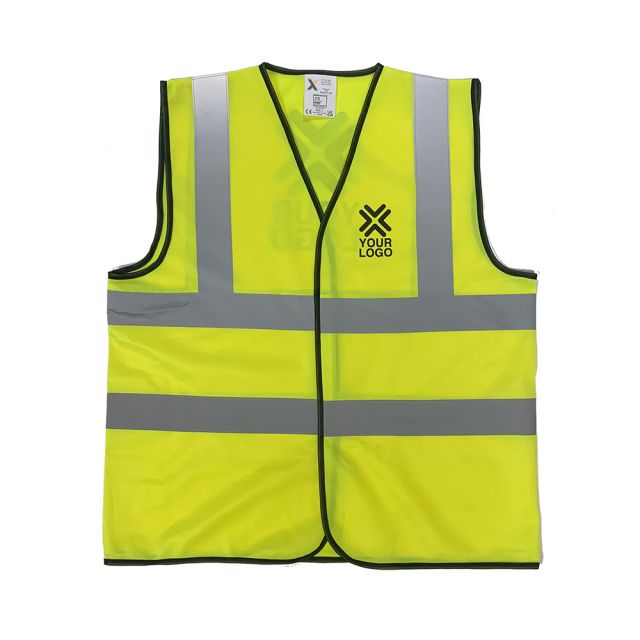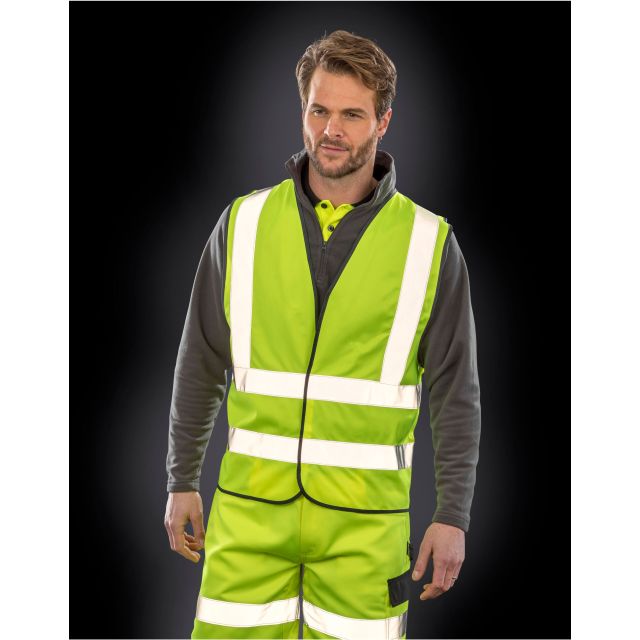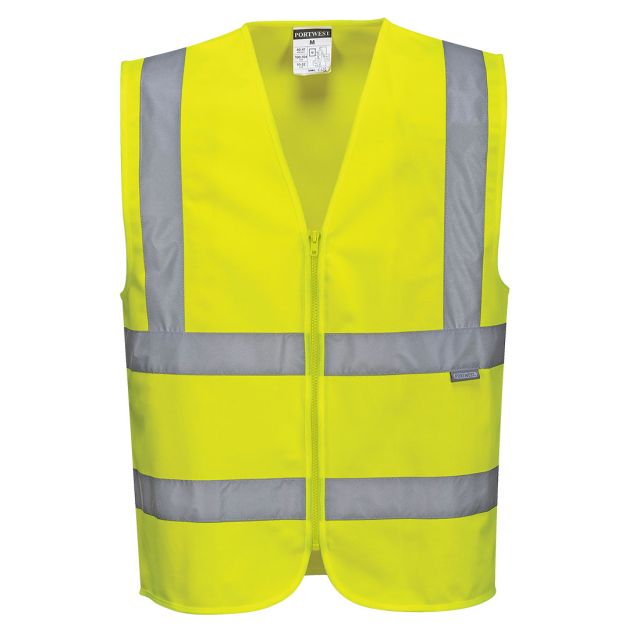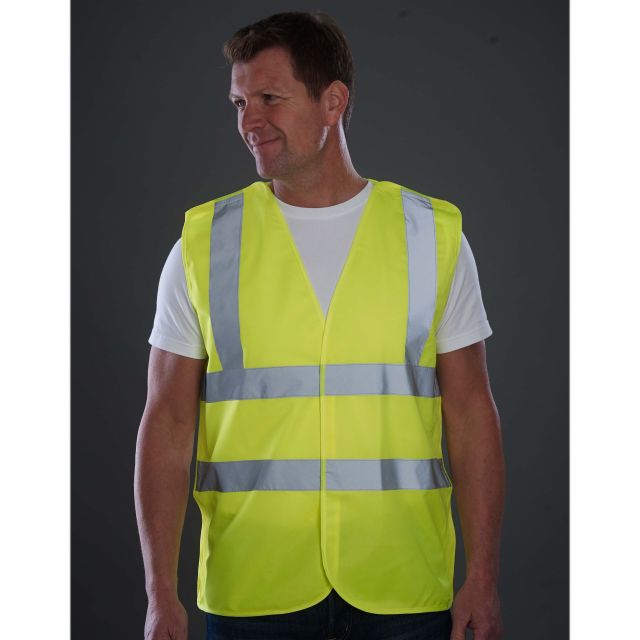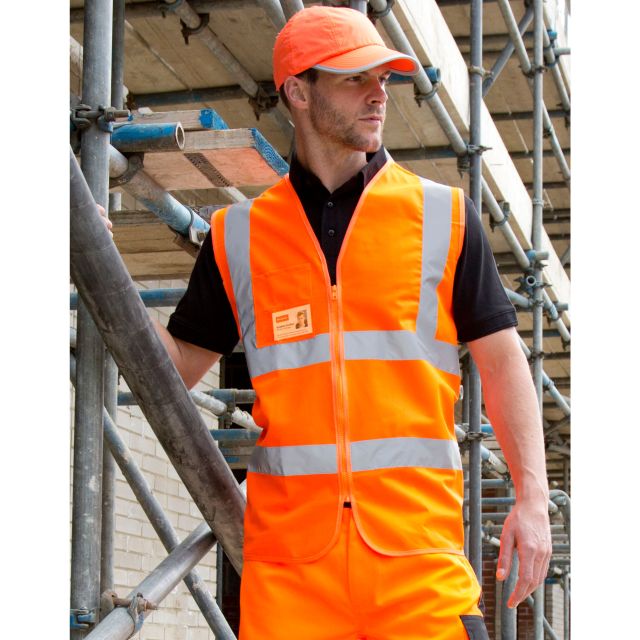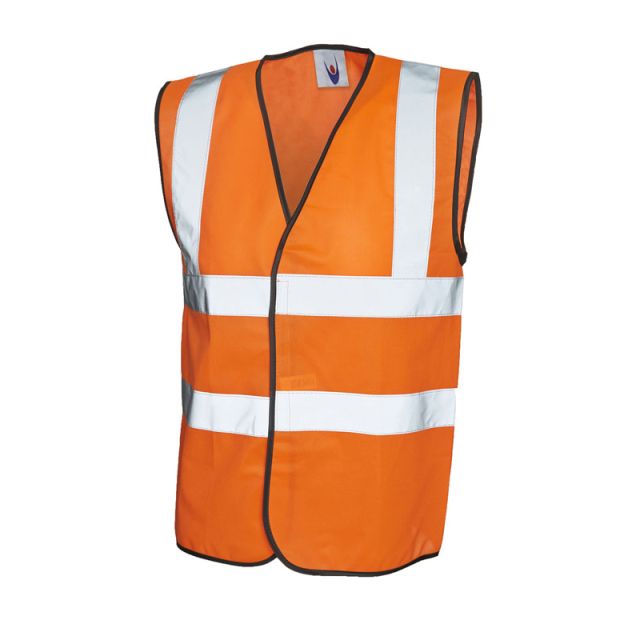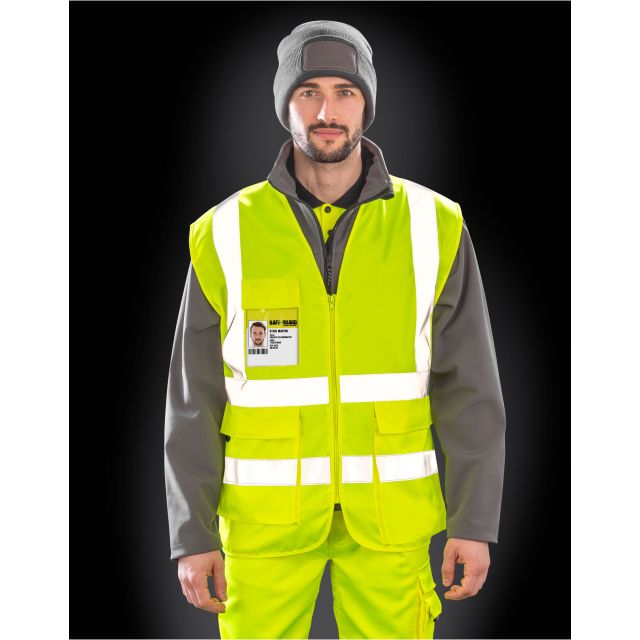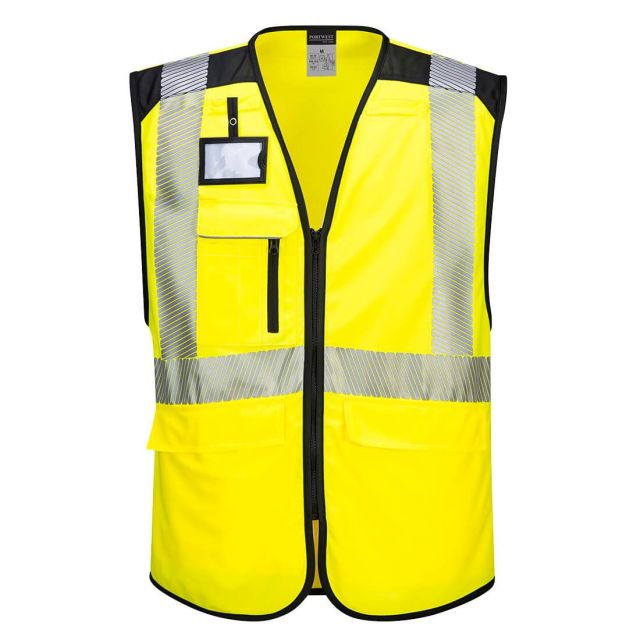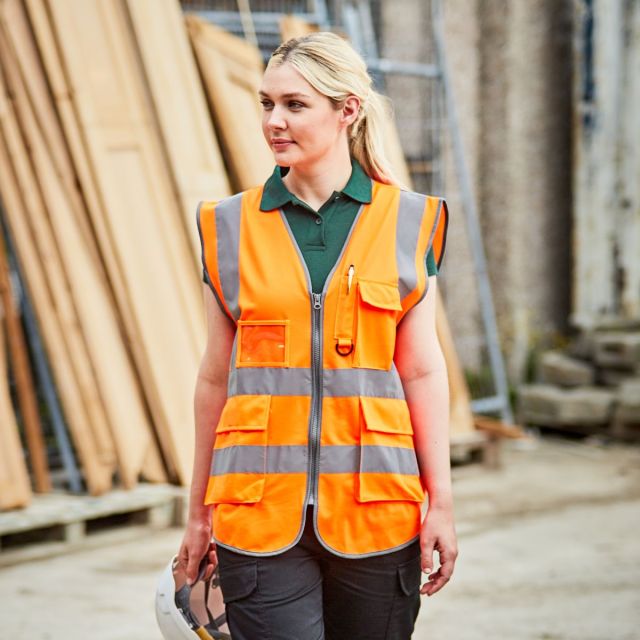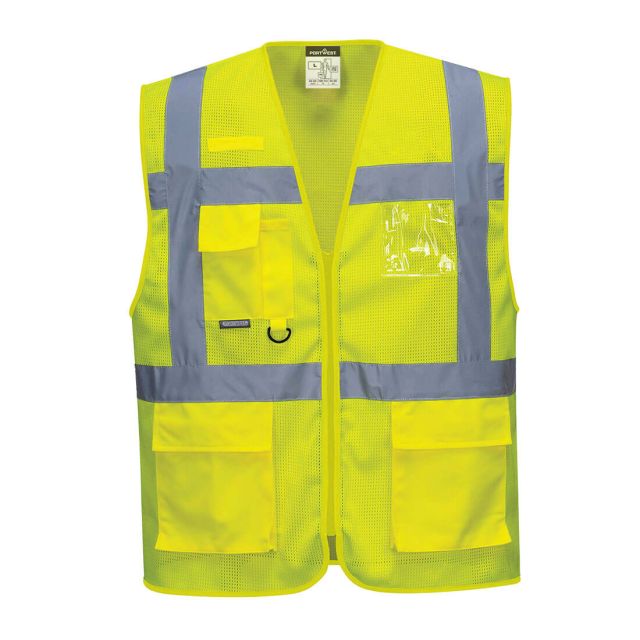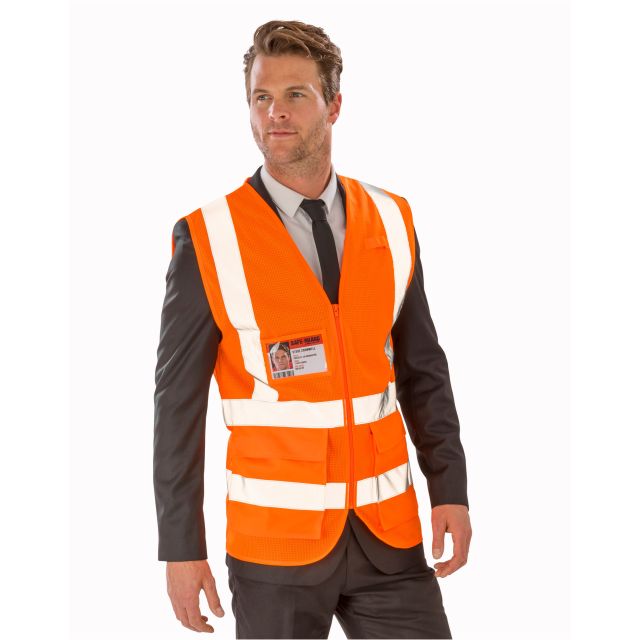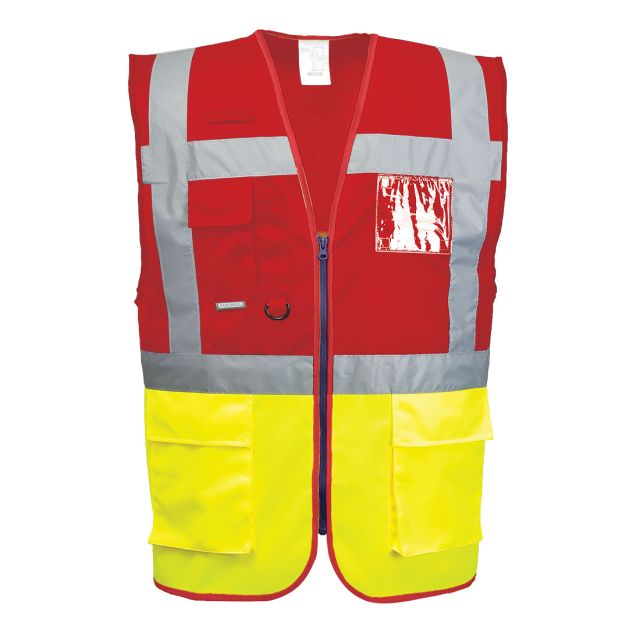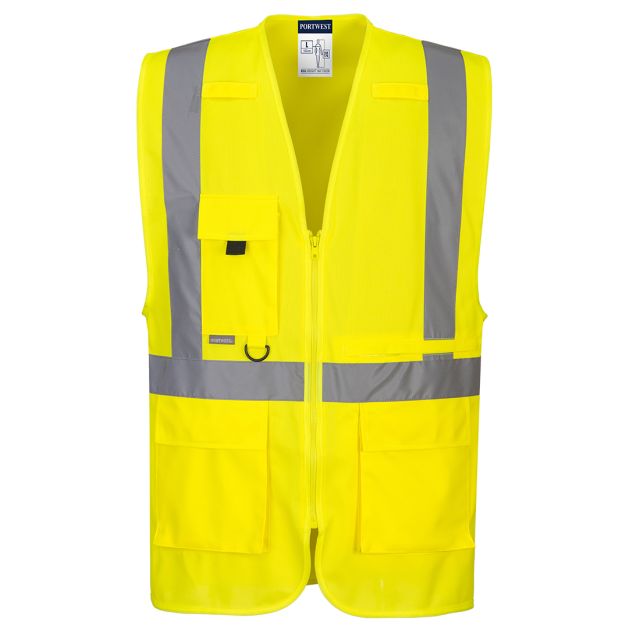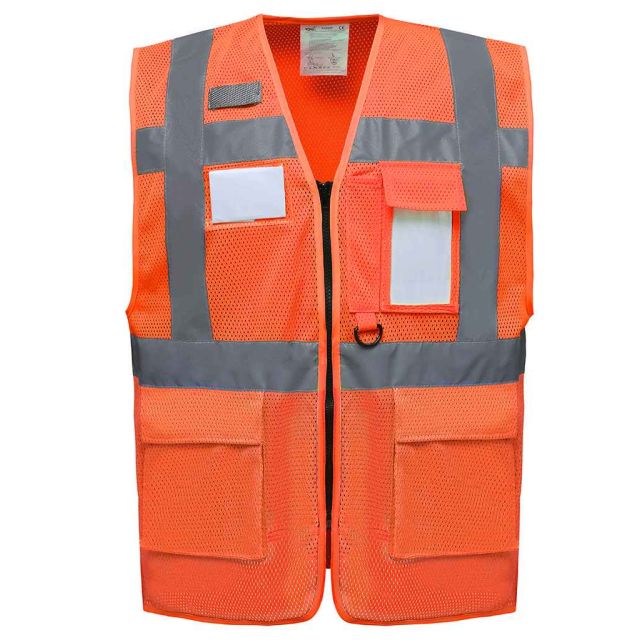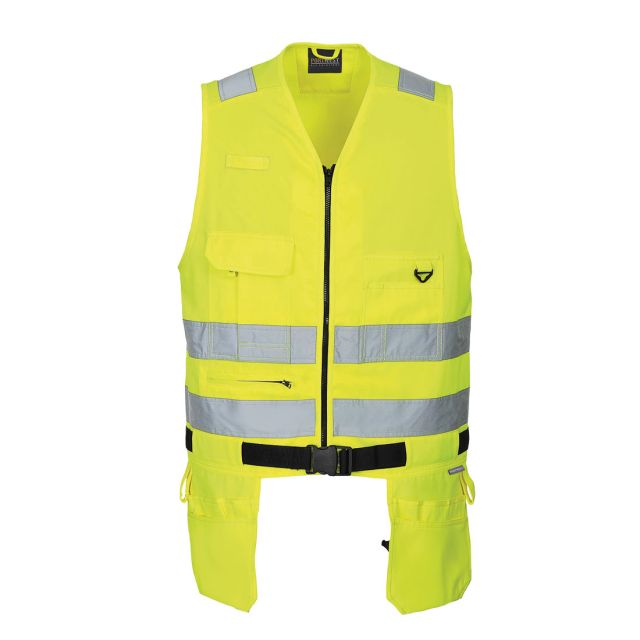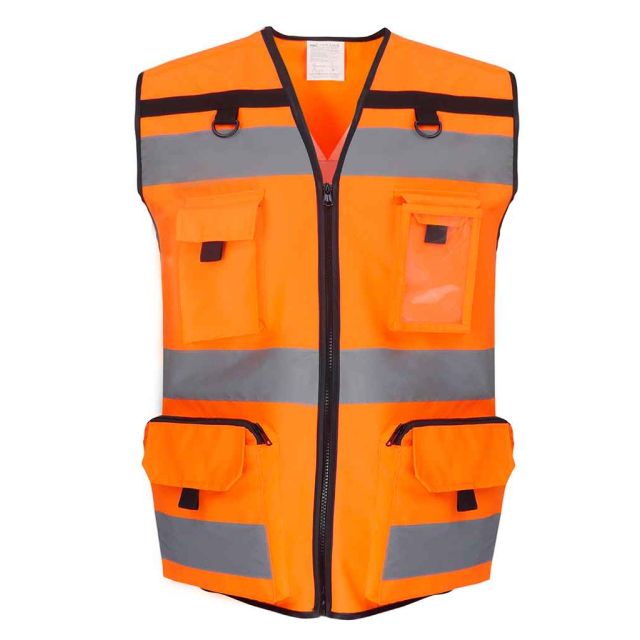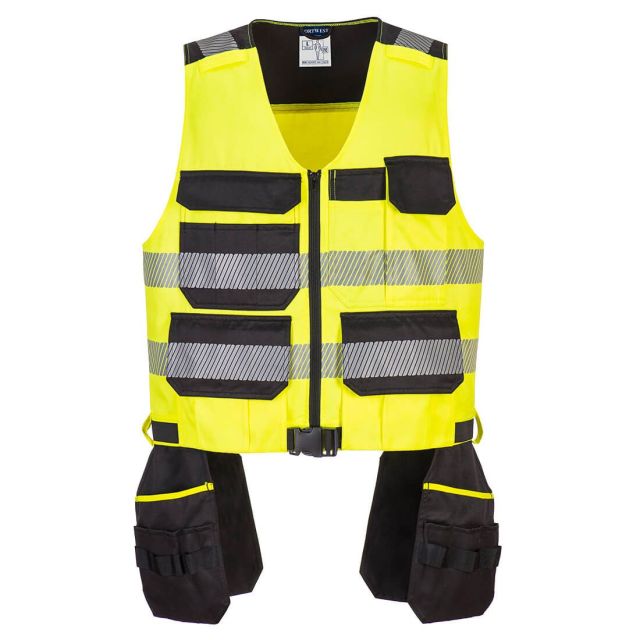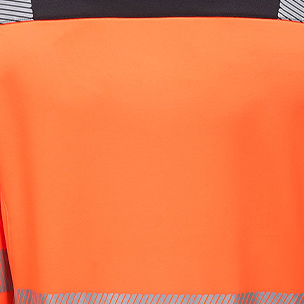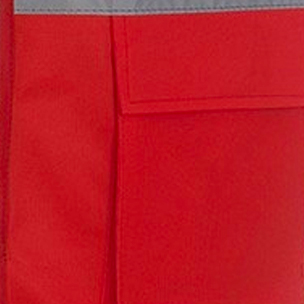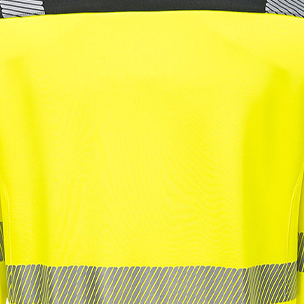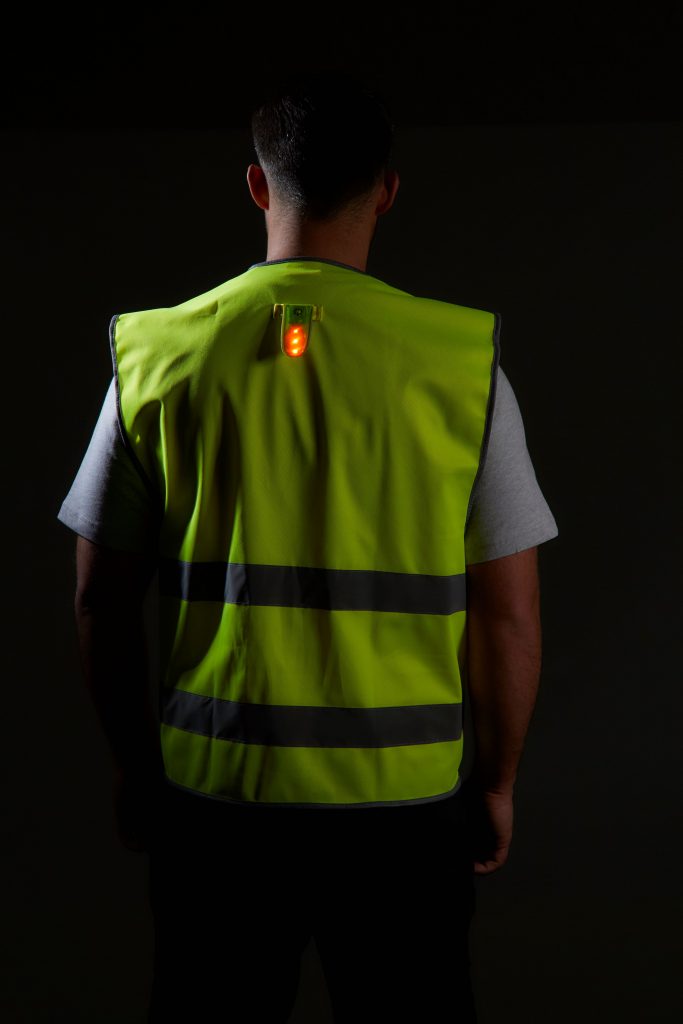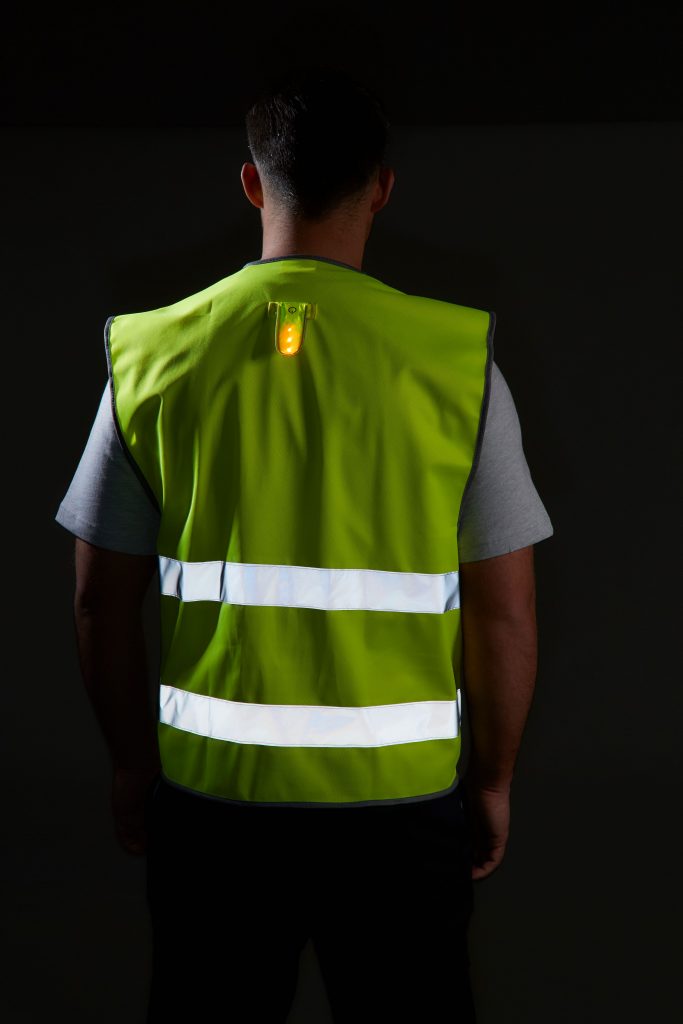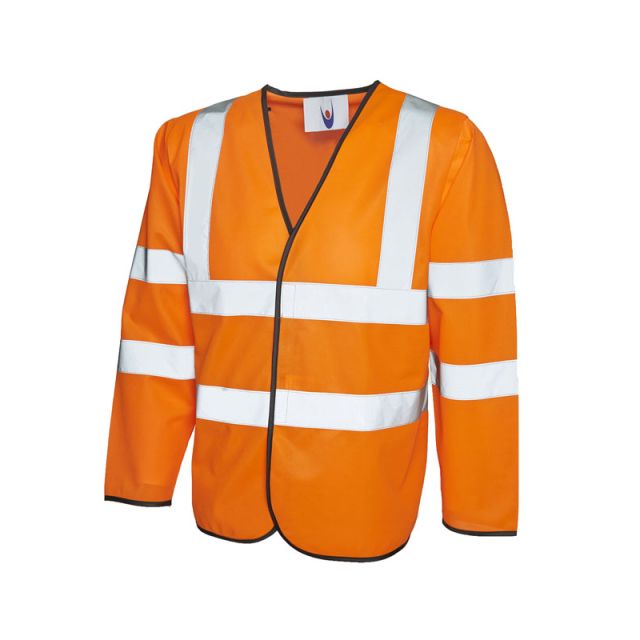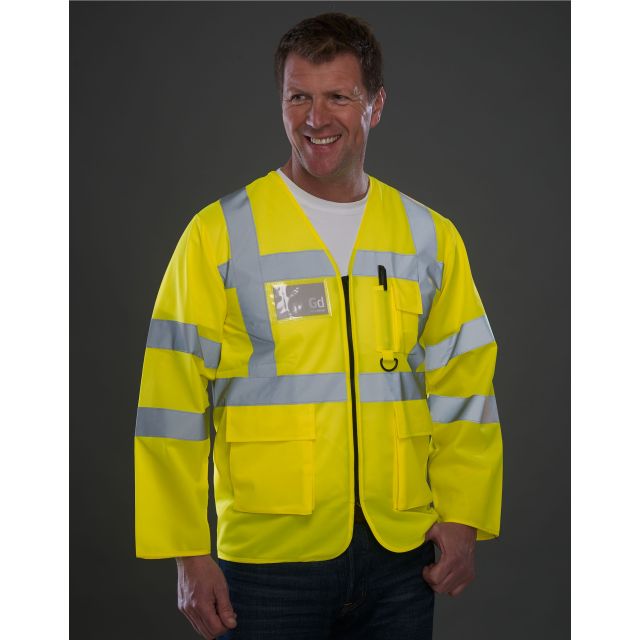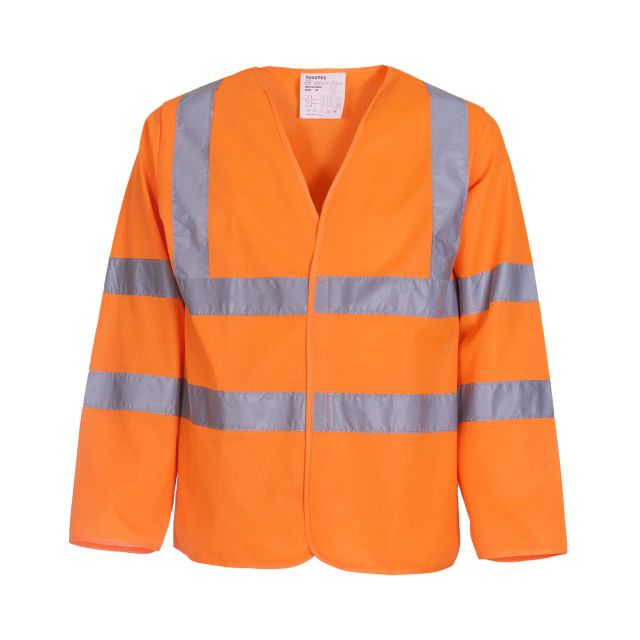Hi Vis Vests: Versatile and Essential for Every Workforce
A hi vis vest is among the most widely used items of personal protective equipment (PPE) in a variety of industries, including construction, engineering, and logistics. Their lightweight design and versatility make them ideal for improving visibility and ensuring worker safety in a number of environments. Hi vis vests, ranging from standard to executive styles, are essential for any workforce who prioritise safety.
In this article, we'll look at the many different kinds of hi vis vest, how they comply with EN ISO 20471, customisation options, and the benefits they provide for both safety and branding.
- Page Contents
- The Importance of Hi Vis Vests
- Standard vs. Executive Hi Vis Vests: What’s the Difference?
- EN ISO 20471 Compliance for Hi Vis Vests
- Long-Sleeved Hi Vis Vests
- Customising Hi Vis Vests for Your Company
- How Often Should You Replace Hi Vis Vests?
- XAMAX®: A Hi Vis Vest Supplier You Can Trust
- Conclusion: Hi Vis Vests for Every Workforce
The Importance of Hi Vis Vests
Hi vis vests make workers more visible in areas where visibility is critical to health & safety. Whether on a construction site, alongside moving vehicles, or in low-light conditions, they reduce the risk of accidents by making workers stand out against their surroundings.
Vests are the most versatile type of high-visibility clothing. They are easy to put on and take off, and can be worn over other clothing. This makes them suitable for both indoor and outdoor workplaces, as well as workers who may quickly shift between jobs requiring different levels of visibility.
Standard vs. Executive Hi Vis Vests: What’s the Difference?
While all hi vis vests are intended to improve visibility, there are substantial differences between standard and executive. Understanding these differences may help you choose the best option for your team's particular needs.
Standard Hi Vis Vests
Standard hi vis vests are the most common and cost-effective type of high visibility clothing. These vests are lightweight, often made of polyester, and have reflective tape over the torso and shoulders to provide retro-reflective visibility.
They're ideal for situations when workers need to quickly change into high-visibility clothing over their regular clothes.
These vests are often viewed as "cheap" because to their simple design, yet they nonetheless meet EN ISO 20471 standards and provide enough safety for low to medium-risk areas.
Executive Hi Vis Vests
Executive hi vis vests are a step beyond the ordinary design, with additional pockets, zips, and even ID card holders. These vests were designed to give more utility while keeping high visibility compliance. The additional features make them useful for supervisors, foremen, and employees that need quick access to tools, paperwork, or identification while on the job.
Executive designs are also usually made from durable materials, resulting in a longer lifespan, particularly for people who wear them regularly or in harsh conditions.
Bonus type: Hi Vis Tool Vests
Hi vis tool vests are a specialist garment designed for workers that need quick access to their tools. They have several pockets, pouches, and loops that allow workers to keep vital tools and equipment close to hand, avoiding the need to carry extra tool belts or bags. The tool vest design is especially useful in areas requiring mobility and efficiency, such as building sites, warehouses, and working at height.
While hi vis tool vests provide extra utility, they maintain compliance with EN ISO 20471 by incorporating fluorescent fabric and reflective tape. The extra features don't affect the vest's fundamental purpose of keeping workers visible and safe. Like executive vests, hi vis tool vests are more durable and can endure the abuse of everyday wear, making them an ideal option for workers who need both usefulness and high visibility on the job.
EN ISO 20471 Compliance for Hi Vis Vests
Like all other high-visibility clothing, a hi vis vest must meet EN ISO 20471 standards to provide effective protection in hazardous areas. The fluorescent fabric and retro-reflective tape are critical components that ensure workers are visible even in low-light circumstances.
Fluorescent Fabric and Colour Compliance
EN ISO 20471 requires high-visibility vests to use certain fluorescent fabric colours certified for workplace safety: yellow and orange. The colours are highly visible in both daylight and artificial light, ensuring that workers can be detected quickly in areas where their safety is dependent on visibility.
However, other high-visibility colours on the market, such as green, pink, and blue, do not meet EN ISO 20471. Even though these colours are not considered official high-visibility colours under safety regulations, they may still be quite useful in certain situations.
Non-compliant colours are often used for:
- Volunteers at events, where visibility is important but full safety compliance may not be necessary.
- Event supervisors or security staff, who need to stand out from other workers without the strict safety requirements of a construction site.
- First aiders at events (but not in workplaces) may wear green vests.
- Children, especially on school trips or in large crowds, where high visibility helps ensure they don’t get lost or overlooked.
While these colours can make individuals more visible in certain settings, they aren’t designed for use in high-risk environments like roadworks or industrial sites. If safety compliance is a priority, sticking to yellow or orange hi vis vests is essential.
The only exception is on Railways, but we'll discuss that in a moment.
Retro-Reflective Tape
The reflective tape on high-visibility vests is intended to reflect light back to its source, so that workers are visible even in low-light settings or at night.
Vests needing Class 2 compliance must include 0.13 m² of reflective tape across the torso and shoulders.
Red and Tear-Away Seams for RIS Standard Hi Vis
Some high-visibility vests, particularly those used in the railway sector and compatible with the Rail Industry Standard (RIS-3279-TOM), must be fluorescent red and include tear-away seams.
These seams make it easy for the vest to break apart if it gets entangled in equipment, reducing the worker's risk of injury. This feature is critical in workplaces where clothing may become hooked on equipment or fast moving vehicles.
Long-Sleeved Hi Vis Vests
Long-sleeved hi vis vests offer more coverage and visibility than typical sleeveless vests. These vests include retro-reflective tape on both the torso and the arms, ensuring the worker is visible from all angles.
Long-sleeved hi-vis vests are invaluable in high-risk situations where complete body visibility is essential. This is particularly important for workers who need to meet Class 3 specifications, that require higher levels of visibility than Class 2 vests.
Long-sleeved vests with reflective tape on the arms keep workers visible from all sides, even when they are moving or using their hands.
These vests are often used in situations where high visibility is critical, such as on motorways, railways, or construction sites with heavy vehicle traffic.
Customising Hi Vis Vests for Your Company
Customising hi vis vests with your company’s logo or name is a great way to promote your brand while ensuring your team remains safe and visible. Hi vis vests can be either printed or embroidered, though printing is generally the preferred method due to the lightweight nature of the garment. Embroidery can add extra weight, which may reduce the comfort and practicality of the vest.
Printing vs. Embroidery
Printing: For most hi vis vests, printing is the best option. It’s lightweight, durable, and can be easily applied to the vest without affecting the fit or comfort. However, the size of the design should be taken into account to ensure that it doesn't obscure too much of the fluorescent fabric, which lowers the vest's visibility.
Embroidery: While embroidery gives a high-quality finish, it can be heavier on lightweight fabrics such as hi vis vests. If embroidery is preferred, use smaller logos or text to keep the vest comfortable and avoid sagging.
Customisation Positions
Customisation options for hi vis vests include:
- Left Breast
- Right Breast
- Back Print (for printing only)
These positions ensure that branding is visible without interfering with the garment’s safety features.
Screen Printing for Large Orders
For large orders of 100 or more hi vis vests, screen printing can be a cost-effective option for your logos. Screen printing is ideal for high-volume customisation and offers a high-quality, long-lasting finish.
For orders below 100 units, we will use indirect printing methods, providing a similar finish but more cost-effective for smaller quantities.
Both methods ensure that your branding looks professional while keeping workers safe and compliant.
How Often Should You Replace Hi Vis Vests?
Any hi vis clothing will inevitably wear out over time. Frequent washing, exposure to sunlight, and general wear and tear can cause fluorescent fabric to fade and reflective tape to crack or peel, reducing the vest’s effectiveness.
Signs that it’s time to replace a hi vis vest include:
- Faded fluorescent fabric, which reduces the vest’s visibility.
- Cracked or peeling reflective tape, which no longer reflects light as effectively.
- General wear and tear, such as torn seams or damaged fastenings.
As a general rule, hi vis vests should be replaced after around 25 washes or sooner if they show visible signs of damage. Regular inspections will ensure your team’s vests remain compliant with EN ISO 20471.
XAMAX®: A Hi Vis Vest Supplier You Can Trust
XAMAX® provide a wide range of hi vis vests to meet the highest safety standards. As a BSIF Registered Supplier, we ensure that all our hi vis vests comply with EN ISO 20471, keeping your team safe and visible in all working environments.
Whether you need screen printing for large orders or indirect printing for smaller quantities, XAMAX® can customise your hi vis vests to reflect your brand without compromising safety. Our experts can help you choose the best customisation options, including printing or embroidery, to ensure your hi vis vests remain compliant and comfortable.
We provide a selection of hi vis vests and a full range of safety workwear for every industry. From head to toe protection, we’ve got your team covered. Visit the XAMAX® homepage to see more.
Conclusion: Hi Vis Vests for Every Workforce
Hi vis vests are an essential part of workwear across many sectors, providing versatile, lightweight protection that keeps workers visible in hazardous conditions. Whether you choose standard vests or executive vests with additional features, these garments improve safety while complying with EN ISO 20471 standards. Long-sleeved hi-vis vests give additional protection in areas that need full-body covering, whilst tear-away seams are an essential safety feature in sectors such as rail.
Customising high visibility vests with printing or embroidery allows you to showcase your brand and still preserve safety. With screen printing available for large-scale orders and cutting-edge indirect printing processes for smaller quantities, you can keep your workers looking professional while staying compliant. At XAMAX®, we provide high-quality, customised hi-vis vests that keep your staff visible, safe, and in compliance with UK health and safety standards.







